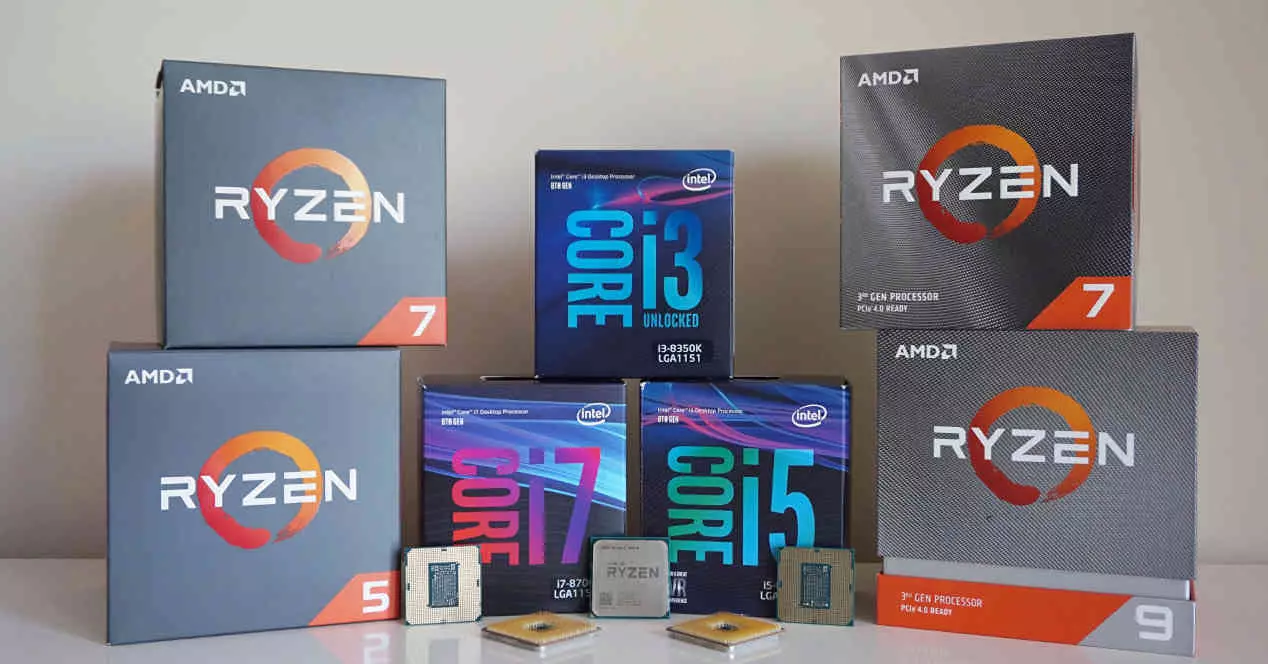The architecture of a current microprocessor is complex, so staying in the basic parameters such as several cores or operating frequency as characteristics to buy them is a mistake. Especially if you compare processors from different companies and series because many other internal parameters define their power, such as the amount of cache, the number of instructions per cycle they execute, and a long etcetera.
Furthermore, due to internal architectural differences, some processors are better than others in specific tasks, also due to the microinstructions they implement. For example, computer applications will take advantage of the AVX-512 instructions of Intel processors, while in other uses, they will hardly take advantage of it. But due to the general nature of this article, I focus on processors for the consumer sector and not on other more specific ones for professionals and companies such as Xeon and EPYC.
The number of cores a processor has determines the number of processes it can run simultaneously. It can run one per core unless the processor is multi-threaded, in which case it can run two threads per core. In the latter case, the execution of the second process will be done at a lower performance so that a multi-threaded physical quad-core processor may have less power than a non-multi-threaded physical six-core processor.
The frequency of operation is essential when comparing processors of the same architecture, and in general, it will always be better the higher its frequency, although with some buts. First, you have to consider the difference between the base frequency and the turbo frequency if the processor has it.
The first is always ensured on all cores, and the second is a maximum that will be reached depending on the number of cores in operation and the temperatures of the microprocessor. Therefore, if an i9-9900K processor is mentioned as having a maximum turbo at 5 GHz but has eight cores, it would only reach that frequency with one or two active cores, and thus it could go down to ensure a turbo of only 4 or 4.2 GHz with the eight assets. If the cooling is terrible, it could go down even to the base frequency of 3.6 GHz, the only one guaranteed by the manufacturer, either Intel or AMD.
Therefore, cooling is essential as well as the thermal design power (TDP) of the processor must be taken into account. This parameter is thermal power dissipated and not power consumed, and unfortunately, both are measured in watts, so that it can be misleading. A 95 W TDP processor can ideally consume 150 W, but those 95 W TDP indicate that they require 95 W cooling to operate at the frequencies .
indicated by the manufacturer.
As for the working memory, manufacturers indicate a base operating frequency, although they can use memory at a higher frequency depending on the motherboard’s chipset in which they are put. Memory modules usually have a memory profile, called XMP for Intel chipset motherboards and AMP for AMD chipset motherboards – they both use the same principle, so don’t look for specific memory with XMP or with AMP: They are the same but are called differently on each platform—, which allows you to use the modules at the speeds of the profile just by activating them in the BIOS of the motherboard.
Of course, there are very basic motherboards that do not implement XMP. If the chipset is essential, the processor will only be able to use memory up to the speed indicated by the manufacturer — 2666 MHz in the case of a Core i5-8400, for example. If the chipset is advanced, like a Z490, you can use memory above 2666 MHz with that processor, regardless of the maximum indicated by the company. A Core i5-10400 in a Z490 will allow the use of 4000 MHz RAM without problems, for example, but as long as the motherboard’s quality allows it.
The first turn is that of the CPUs with six cores in total, of which we have selected three representatives to compete with each other. On the Intel side, we have their Intel Core i5-11600K based on the Rocket Lake architecture and the Intel Core i5-11400F based on the same architecture, while on the AMD side, we have chosen the AMD Ryzen 5 5600X.
The first turn is that of the CPUs with six cores in total, of which we have selected three representatives to compete with each other. On the Intel side, we have their Intel Core i5-11600K based on the Rocket Lake architecture and the Intel Core i5-11400F based on the same architecture, while on the AMD side, we have chosen the AMD Ryzen 5 5600X.

